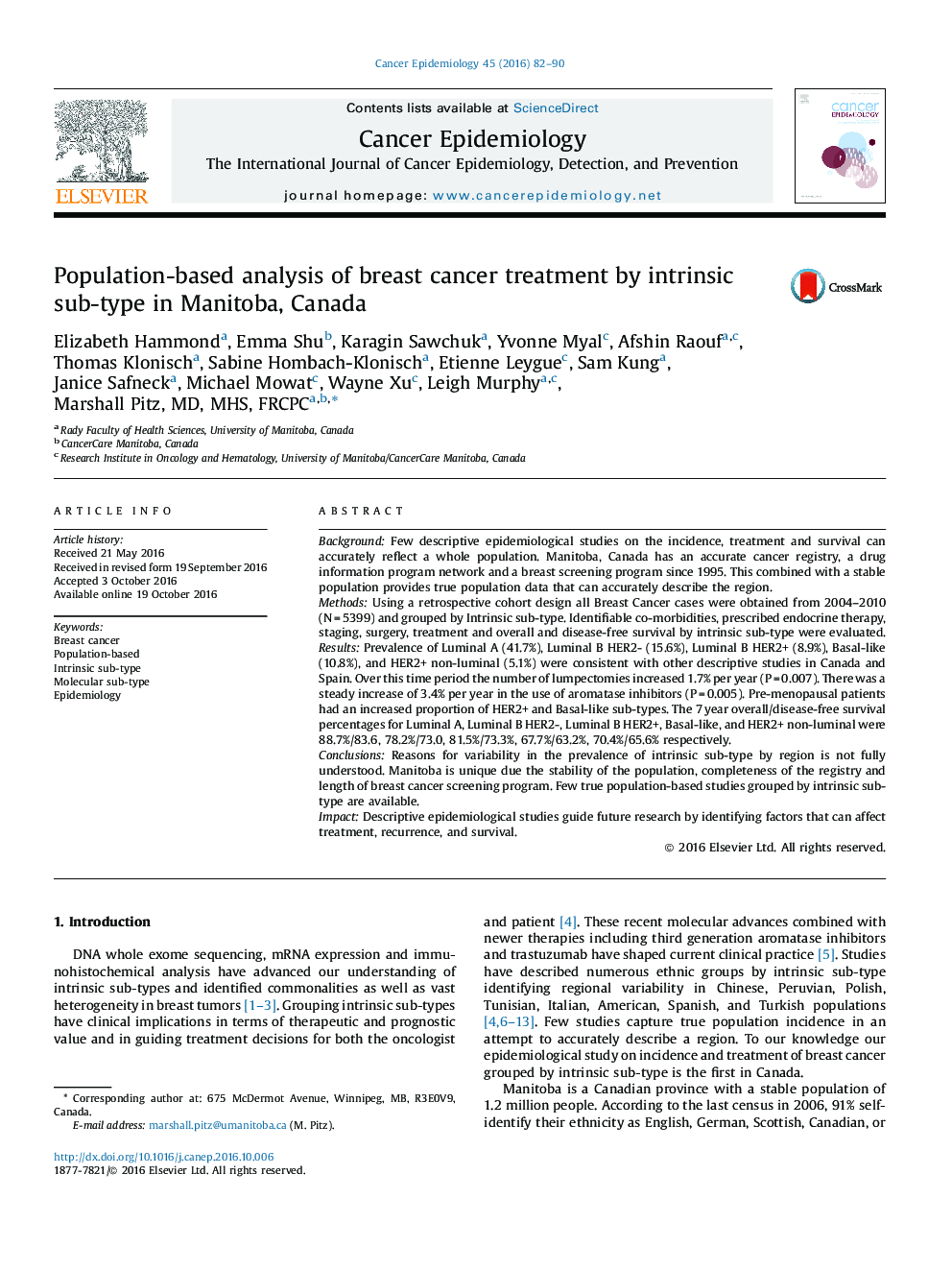| Article ID | Journal | Published Year | Pages | File Type |
|---|---|---|---|---|
| 5524821 | Cancer Epidemiology | 2016 | 9 Pages |
â¢The Manitoba Cancer Registry provides population-based data that is often difficult to capture.â¢Our 21 year screening program reduces lead and length time biases.â¢Descriptive studies help identify factors affecting treatment, recurrence, and survival.â¢Our results may be applied to other similar populations.
BackgroundFew descriptive epidemiological studies on the incidence, treatment and survival can accurately reflect a whole population. Manitoba, Canada has an accurate cancer registry, a drug information program network and a breast screening program since 1995. This combined with a stable population provides true population data that can accurately describe the region.MethodsUsing a retrospective cohort design all Breast Cancer cases were obtained from 2004-2010 (NÂ =Â 5399) and grouped by Intrinsic sub-type. Identifiable co-morbidities, prescribed endocrine therapy, staging, surgery, treatment and overall and disease-free survival by intrinsic sub-type were evaluated.ResultsPrevalence of Luminal A (41.7%), Luminal B HER2- (15.6%), Luminal B HER2+ (8.9%), Basal-like(10.8%), and HER2+ non-luminal (5.1%) were consistent with other descriptive studies in Canada and Spain. Over this time period the number of lumpectomies increased 1.7% per year (PÂ =Â 0.007). There was a steady increase of 3.4% per year in the use of aromatase inhibitors (PÂ =Â 0.005). Pre-menopausal patients had an increased proportion of HER2+ and Basal-like sub-types. The 7Â year overall/disease-free survival percentages for Luminal A, Luminal B HER2-, Luminal B HER2+, Basal-like, and HER2+ non-luminal were 88.7%/83.6, 78.2%/73.0, 81.5%/73.3%, 67.7%/63.2%, 70.4%/65.6% respectively.ConclusionsReasons for variability in the prevalence of intrinsic sub-type by region is not fully understood. Manitoba is unique due the stability of the population, completeness of the registry and length of breast cancer screening program. Few true population-based studies grouped by intrinsic sub-type are available.ImpactDescriptive epidemiological studies guide future research by identifying factors that can affect treatment, recurrence, and survival.
